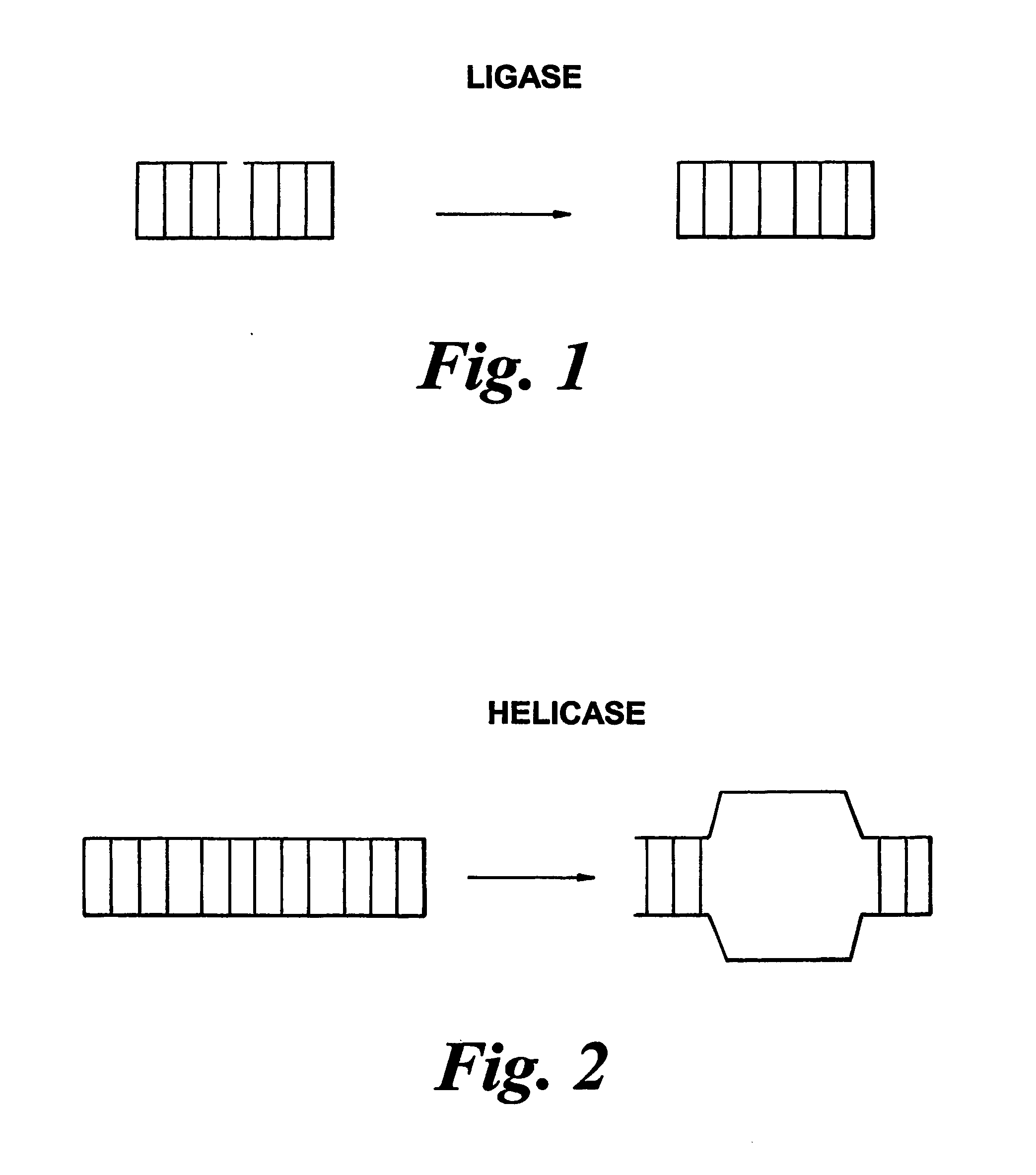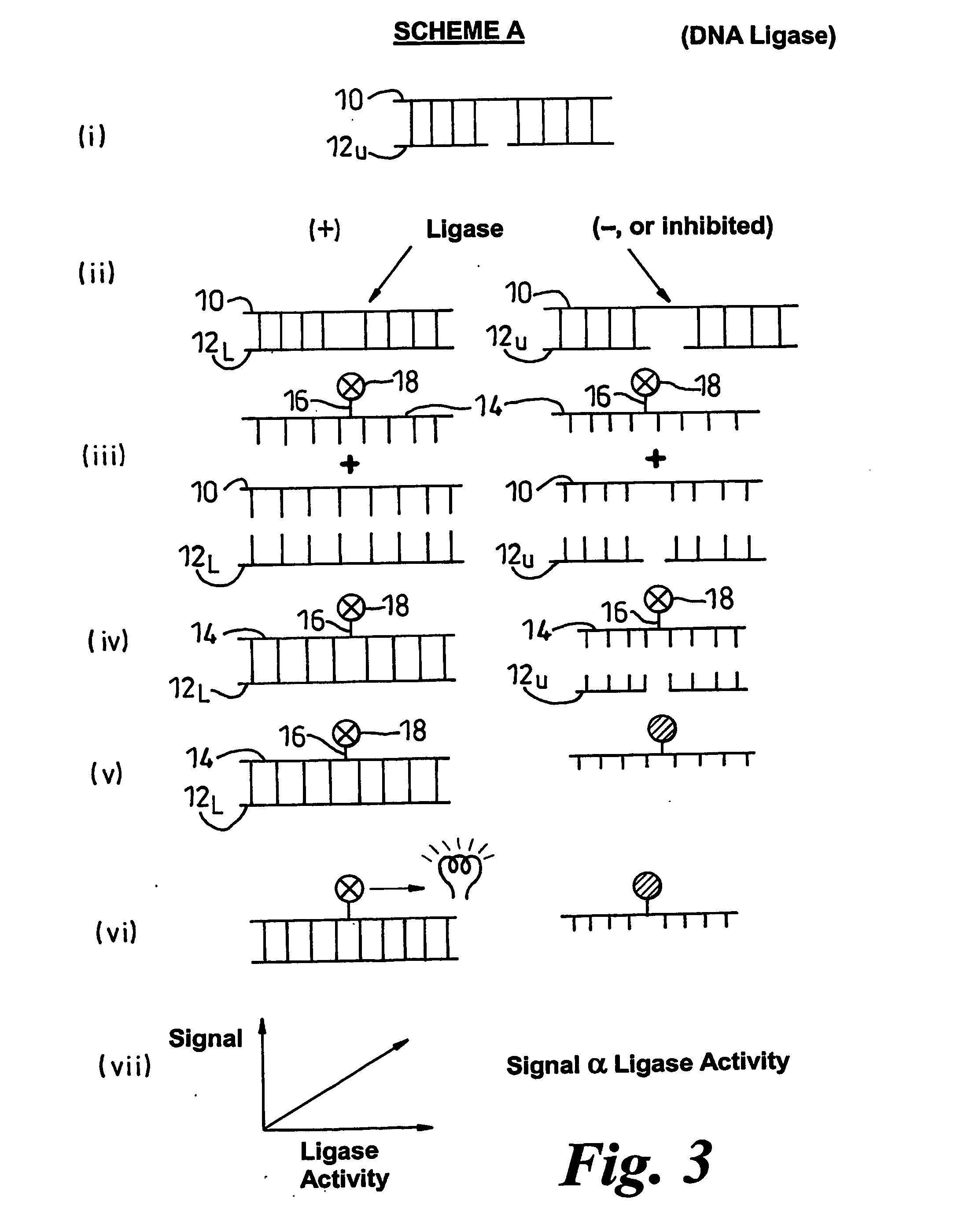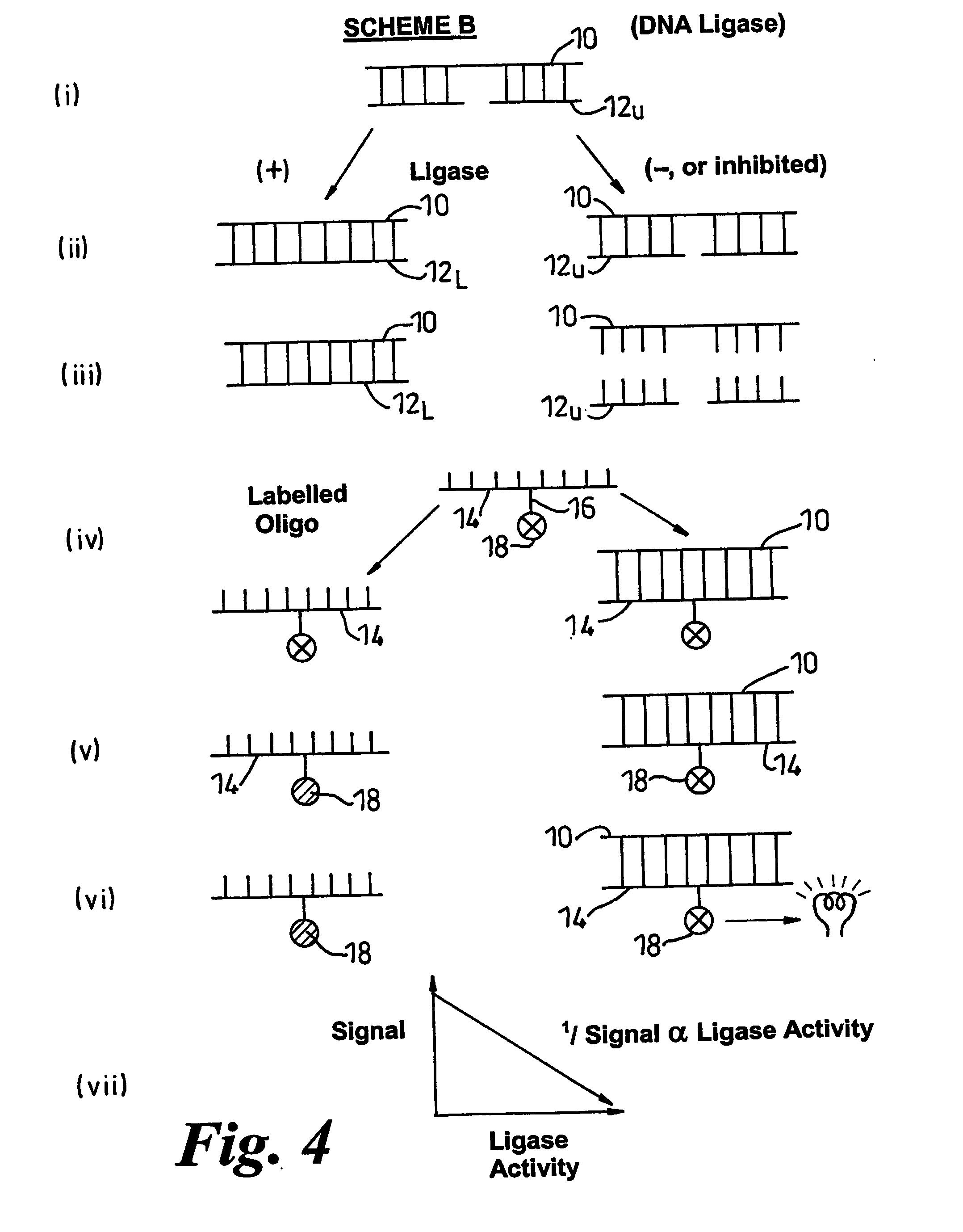Methods of detecting modification of genetic material and monitoring processes thereof
a technology of genetic material and monitoring process, applied in the direction of material testing goods, biochemistry apparatus and processes, instruments, etc., can solve the problems of time-consuming, incurring waste disposal costs, and necessitating additional experimental precautions
- Summary
- Abstract
- Description
- Claims
- Application Information
AI Technical Summary
Benefits of technology
Problems solved by technology
Method used
Image
Examples
example 1
1. DNA Ligase Assay Using Hybridisation Protection of a Chemiluminescent Acridinium Ester Labelled Oligonucleotide Strand.
[0200] Three oligonucleotides were prepared using established methods. The strands of these were as follows:
(i)5′-GGC CTC TTC GCT ATT ACG CCA GCT-3′(ii)3′-CCG GAG AAG CGA-5′(iii)3′-TAA TGC GGT CGA-5′
[0201] Also prepared by published methods was a chemiluminescent derivative of (i) as follows (* represents the position of the chemiluminescent label)
(iv)5′-GGC CTC TTC GCT*ATT ACG CCA GCT-3′
[0202] The free 5′-end of (ii) was phosphorylated by established methods. The phosphorylation ensures that the strands are nicked. Stock duplex was formed by hybridising the phosphorylated (ii) with equimolar amounts of (i) and (iii) for one hour at 60° C. in lithium succinate buffer. Investigations of ligase activity were performed using mixtures of the duplex (6 pmol) and T4 DNA ligase (80 units) admixed with putative inhibitors if required.
[0203] The reaction product wa...
example 2
[0208] Reverse Transcriptase (RT): Inhibition of by Di-Deoxy Thymidine Triphosphate (ddTTP).
[0209] Assay template was a pre-primed 81 nt DNA (non-sense) oligonucleotide consisting of sequential primer, T7 viral DNA dependent RNA polymerase promoter and reporter sequences. RT dependent extension of a short pre-hybridised sense strand primer yields double stranded promoter / reporter and enables RT regulated T7 RNA polymerase generation of report mRNA transcript. Template was incubated in buffer containing rTNPs (2 mM), dTNPs (0.1 mM), avian myeloblastosis virus RT, 17 RNA polymerase and serial dilutions of ddTTP. Reporter mRNA product was then measured by HPA (Hybridisation Protection Assay). Briefly, oligonucleotides complementary to the substrate strand, or its complementary counterpart, where hybridised to the corresponding strand of DNA after exposure to a melt temperature.
[0210] Hydrolysis reagent was added as before and chemiluminescence measurements carried out as described ab...
example 3
[0211] DNA Helicase: Time Course of Strand Separation at Three Enzyme: Substrate Ratios.
[0212] AE labelled double stranded substrate was incubated in the presence of enzyme. Unseparated substrate confers hybridisation protection to AE and thus signal intensity is inversely proportional to enzyme activity.
PUM
| Property | Measurement | Unit |
|---|---|---|
| volume | aaaaa | aaaaa |
| volume | aaaaa | aaaaa |
| temperature | aaaaa | aaaaa |
Abstract
Description
Claims
Application Information
 Login to View More
Login to View More - R&D
- Intellectual Property
- Life Sciences
- Materials
- Tech Scout
- Unparalleled Data Quality
- Higher Quality Content
- 60% Fewer Hallucinations
Browse by: Latest US Patents, China's latest patents, Technical Efficacy Thesaurus, Application Domain, Technology Topic, Popular Technical Reports.
© 2025 PatSnap. All rights reserved.Legal|Privacy policy|Modern Slavery Act Transparency Statement|Sitemap|About US| Contact US: help@patsnap.com



